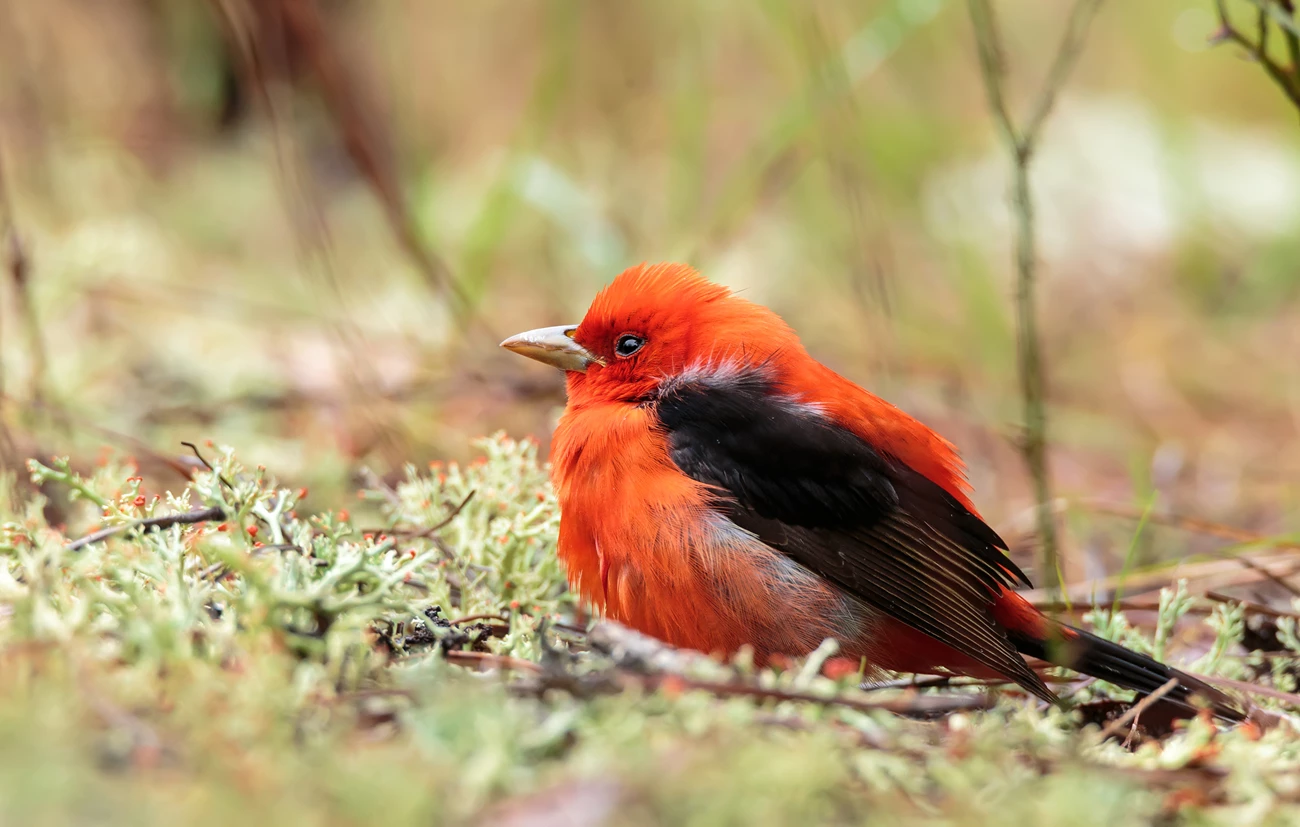
NPS/Neil Lewis Despite their bright coloring, sightings of this bird are a rarity. This is primarily because they are found only in the upper canopy of trees where they spend their time moving slowly in search of food. Besides being rarely seen, they are also rarely heard. This is because of the similarity between the Scarlet Tanager and Robin or Rose-breasted Grosbeak calls and songs. Bird watchers with patience and perseverance will, however, find the Scarlet Tanager. Physical DescriptionScarlet Tanagers are a beautifully colored bird. The male's breeding plumage is red on the body and black on the wings and tail.Scarlet Tanagers are unusual among the 230 species of the Neotropical tanager family because they have seasonal changes in plumage. Only one other tanager, a South American species, does this. Females, immature males, and winter males have an olive colored back, yellow underside, and brownish wings. Adult birds are approximately 7 inches (18 cm) long. Lifespan / ReproductionTanager nests can be situated between four and seventy-five feet above ground on horizontal branches far from the trunks. Nests are constructed of loosely woven twigs and roots and are lined with grass and weed stems. Range / HabitatThe range of the Scarlet Tanager extends from southeastern Canada to the southern United States and from the east coast to the mid-west. BehaviorAfter spending the winter in the canopy of the northwestern South American tropical forest, Scarlet Tanagers begin their nocturnal migration north through Central America and across the Gulf of Mexico. The first birds arrive in North America mid March with the peak time in April. Ecosystem Role / ThreatsAdult scarlet tanagers are eaten by birds of prey, including various owls. Eggs and nestling predators include blue jays, grackles, American crows, squirrels, chipmunks, and snakes. DietInsects are the primary food preference of the Scarlet Tanager. Most often the Scarlet Tanager moves slowly through tree tops searching for beetles and caterpillars; however they do feed on other insects as well like bees, wasps, and butterflies. They even are known to feed on fruits and buds, but primarily as a supplement in their insectivorous diet. |
Last updated: July 11, 2018
